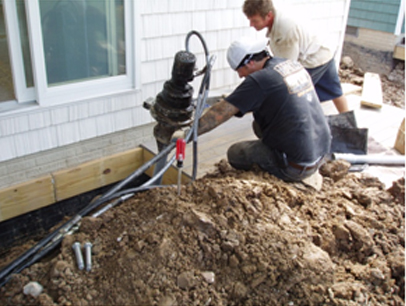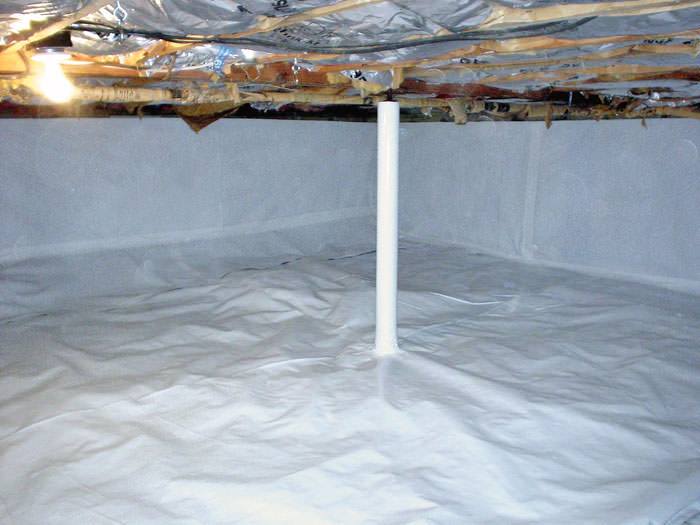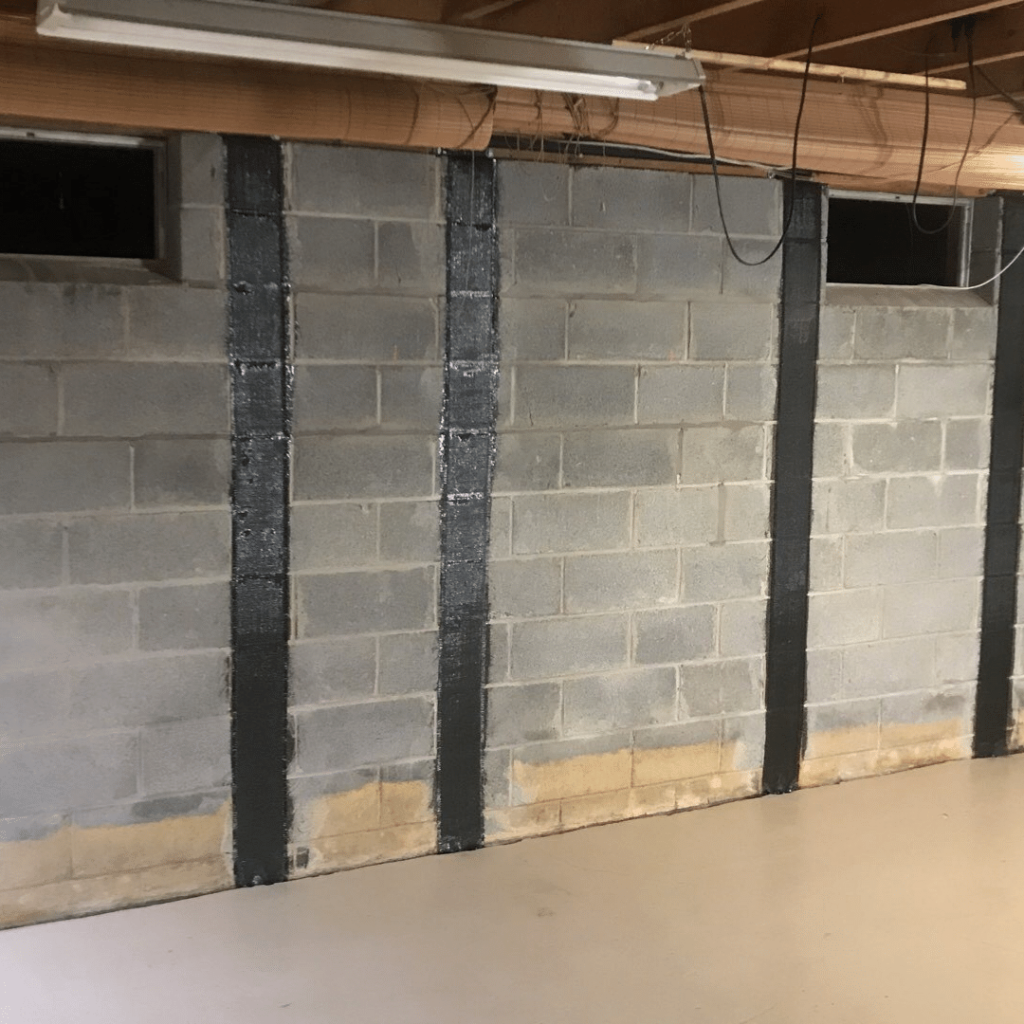At Tar Heel Foundation Solutions, we know that hearing your home has structural problems is never easy for a homeowner. Be it foundation repair, crawl space repair or one of our other services, we aim to provide Indian Trail homeowners with solutions that 1. solve the problem, 2. are long-lasting, and 3. are cost-effective.
And we back it up with dedicated customer service both before we start and after the job has been completed.
Failing foundations affect homes from basement floor to the top of the chimney. When the structure of a home is weakened or misaligned, it can cause problems in numerous and sometimes surprising ways. Among them are:
If you have noticed these or other structural problems with your home, contact experienced foundation repair professionals who can diagnose if you are having foundation problems or if a simple crack filler or minor repair will do.


If your home or business is experiencing settlement, one of the most common causes of foundation problems, it means the soil beneath it isn’t stable enough to support the weight of the structure.
Therefore, we must transfer the load onto something strong enough to provide the needed support.
In most cases, the best method of doing this is through foundation underpinning. Steel piers are sunk into the soil until they reach a load-bearing strata or bedrock. At this point, we hydraulically lift the building back to level and attach the piers to the footing with brackets. We then transfer the load of the building onto the piers, providing a permanent foundation settlement solution.
We use two different types of piering depending on variables such as bedrock depth.
The first are steel push piers. Push piers are end-bearing piers. They are, essentially, long steel rods that are sunk into the ground until they hit soil or bedrock hard enough for them to sit on without settling when the weight of the house is added.
The second is helical piers. Helical piers are like push piers except they have one or more helical plates that give them the appearance of giant screws. They are screwed into the ground, and torque readings during installation tell us precisely when they have reached strong enough soil to support the weight of the building.
In either case, we load-test the piers before they get attached to the building. It is not enough for use to think that the piers can support the weight of the building. We demand proof.
Sometimes the major cause of foundation problems boils down to voids in the soil beneath the building. These can be countered with pressure grouting.
The grout is injected into the void beneath the surface, not only filling the void but simultaneously compacting the surrounding soil. Stabilizing the ground can help stabilize the foundation, especially in cases where foundation problems are still minor.
If you plan to build in an area where you know the soil will likely lead to foundation problems, the easiest solution is to plan ahead.
Helical piers can be installed early in the construction process and tied into the foundation’s gridwork. This provides stability from Day 1 and prevents more costly problems down the road.


Homes with crawl space foundations, by their very nature, are going to have a slightly different foundation repair, and just general repair, needs than homes with slab or basement foundations.
Some of that comes down to the existence of the crawl space itself. If not properly maintained, water problems in particular can wreak havoc on crawl spaces and, by extension, the rest of the home.
Whether it be flooding, pooling water or simply excess humidity, moisture in a crawl space can cause problems ranging from health to structural. They include:
Whether the problem is rotting beams or floor joists or sinking piers, crawl space repair often involves adding more support for the beams themselves.
Either crawl space jacks or CMU piers are the preferred method to lend that additional stability. CMUs (or Concrete Masonry Units) are also known as cinder blocks. Stabilizing piers built out of cinder blocks can be built in strategic locations in the crawl space to provide additional support for the beams and, through them, the entire house.
In some cases, however, the beams or joists might be too badly damaged to even be supported in that manner. In that case, the affected beams or joists will have to be replaced.


Once the crawl space is repaired, the next job is to make sure that the problem doesn’t come back. In the case of water issues, that means crawl space encapsulation.
Crawl space encapsulation typically involves using a sturdy vapor barrier to cover the floor and walls of the crawl space. This, along with other waterproofing efforts, will keep the excess moisture out of the crawl space and prevent the mold or wood rot issues from returning.


Closely tied to foundation repair, bowing basement walls generally aren’t caused by the soil being too loose. Rather, excess water in the soil on the outside of the wall usually takes the blame.
This hydrostatic pressure pushes in on the basement or foundation wall until it begins to crack and bow.
As you might imagine, this poses a serious structural problem. The wall must be stabilized in order to prevent further damage.
There are two methods we employ to do this. The first is anchoring the wall in the soil outside, counteracting the force of the soil pushing inward.


We do this through the use of helical tiebacks or earth anchors. While they look slightly different, both operate on the same principal, with plates on the inside of the wall and the tieback or anchor extending into the soil outside.
These same solutions can be used to repair bowing retaining walls as well.
The second method remains on the inside of the wall. We attach carbon fiber strips from the top of the wall to the bottom. These thin strips consist of a material even stronger than the I-beams that they generally replaced. They are attached to the sill plate and the foundation floor, strengthening the entire wall in the process.
Which method is right for you will be determined by variables including the extent of the damage.


Are you looking to construct a boardwalk? Tar Heel Foundation Solutions can use helical piers to replace traditional concrete methods of installing foundations with a more economical and greener solution.
Helical anchors save time and money while not disturbing the surrounding terrain. They also can better secure the boardwalk in unstable soil.
Helical anchors also can be easily removed when placed for temporary applications. The anchors can be unscrewed from the soil and placed again without damaging the soil or the anchor.
While pressure grouting has a foundation repair component, as mentioned earlier, it also can be used in crack repair and waterproofing applications.
Grout is inserted via predrilled holes. When cured, it creates a water-tight seal, fixing the cracks and inhibiting the flow of water.
If your Indian Trail home or business is in need of foundation repair or fixing other structural issues, contact us at Tar Heel Foundation Solutions. We are experienced foundation contractors with the know-how and materials to handle jobs large and small. Get a free estimate to find out if your home has serious foundation issues.